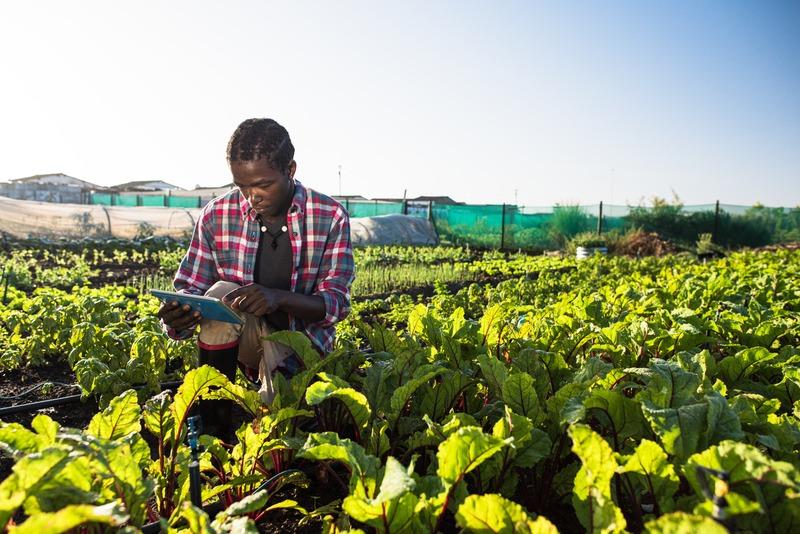Creating a Better and More Inclusive Future Through Regenerative Sustainability

The Cisco Foundation recently made a $100 million commitment to invest in a sustainable and regenerative future through climate solutions. While you’re more likely to hear the term environmental sustainability in conjunction with climate solutions, regenerative sustainability is gaining influence.
In a recent report titled Sustainability, Restorative to Regenerative, the authors explain that the sustainability movement historically focused on mitigating impacts and maintaining balance to avoid further environmental damage. For example, reducing greenhouse gas (GHG) emissions by replacing fossil fuel use with renewable energy, or investing in carbon offsets to fund projects, like planting trees, to reduce GHG emissions equal to what has been emitted. The more recent concept of regenerative sustainability goes beyond that, focusing on improving social and ecological systems that will in turn help to restore the planet. Our commitment to regenerative sustainability means that we want to leave systems even better than we found them, so that ecological damage can be reversed and eventually restored.
At Cisco, we realize that regenerative sustainability is an essential part of our goal to create a more inclusive future for all. We have three approaches to regenerative sustainability: nature-based solutions that help restore ecosystems, community engagement to encourage action, and technological solutions that can help us monitor and improve our efforts.
The significance of nature in regenerative sustainability
Bees and other pollinators play an important role in regenerative agriculture. A great example of a nature-based solution is Cisco’s beehives near our Research Triangle Park campus, which support the growing pollinator population in North Carolina. According to the Food and Agriculture Organization of the United Nations, close to three-quarters of the world’s crop species depend, at least in part, on bees and other pollinators. The number of honey bee hives in the United States has decreased from 6 million in the 1940s to about 2.5 million today due to threats like pesticides and higher temperatures caused by climate change. By introducing more bees to our environment through responsible beekeeping practices, and adding bee and pollinator-friendly habitats where there previously were none, the hope is that bee populations will recover to their former numbers, in turn supporting our food systems and maintaining biodiversity.
Another important focus area of regenerate agriculture is soil fertility and health, since 95 percent of food is directly or indirectly produced on Earth’s soils. But unsustainable agriculture practices and other improper land use changes, such as illegal deforestation, can accelerate soil erosion up to a thousand times, according to the UN Food and Agriculture Organisation. Healthy soil converts decaying matter into plant nutrients and improves crop production by holding in water and nutrients. A great example of how technology can support these processes is Sensegrass, developed by a 2020 Cisco Global Problem Solver Challenge winner. Sensegrass is a smart farming solution that combines IoT sensors and agronomical software to allow farmers to measure data and analyze the health of their soil, helping them to increase yields with fewer inputs.
You also may have seen an example of regenerative sustainability in your own neighborhood. The number of cities and towns in the United States offering composting programs has grown by 65 percent, with composting bins being offered (or sometimes required) alongside garbage and recycling bins. Since San Francisco started its composting program, the city has collected more than two million tons of material, which was composted and now being used by local farmers. When compostable materials go to a landfill, they will produce methane emissions. Composting these same organic materials and returning them to the soil helps plants and microorganisms grow and actually pulls carbon out of the atmosphere. At Cisco, we’ve introduced composting at several of our largest campus locations, including San Jose, Bangalore, and Research Triangle Park. In Bangalore, employees can even take bags of compost generated on campus home to use in their own gardens. Across the company, we have diverted 80 percent of the waste we generate internally from landfill through a combination of recycling, composting, and donations.
Building community and taking action towards widespread change
To overcome the climate crisis, we need collective action, community engagement, and innovative solutions. One person can make a difference, and when we work together, we can make an even bigger impact. At Cisco, we engage our employees on sustainability topics through initiatives like Cisco GreenHouse, a virtual platform that allows anyone at Cisco interested in sustainability to learn more and connect with colleagues worldwide. We also organize an annual two-month employee volunteerism and awareness campaign to celebrate Earth Day, called Earth Aware. Our keynote event each year is SustainX, our annual thought leadership forum on sustainability.
Many of the nonprofits Cisco supports focus on both supporting local communities and reducing environmental impact. Seventy-eight percent of people in sub–Saharan Africa use solid fuels like wood for cooking. These fuels emit black carbon, which causes as much warming as 700kg of CO2, which could circulate in the atmosphere for the next 100 years. Founded in 2010, Solar Sister is a first-time Cisco nonprofit partner grantee and new Environmental Sustainability grantee. Through a network of entrepreneurs, Solar Sister distributes clean cookstoves that reduce fuel usage by over 50 percent and reduce black carbon emissions from cooking. So far, Solar Sister’s solution has avoided 557K metric tons of CO2e emissions; empowered local entrepreneurs, resulting in increased household income; and improved community members’ health by reducing their exposure to solid fuel emissions.
Finding solutions towards the regenerative process
By working together, we believe we can find solutions to even our most complex problems. At Cisco, we use technology to accelerate the regenerative process. We look forward to seeing what all of us can achieve through our commitment to invest in climate solutions.

